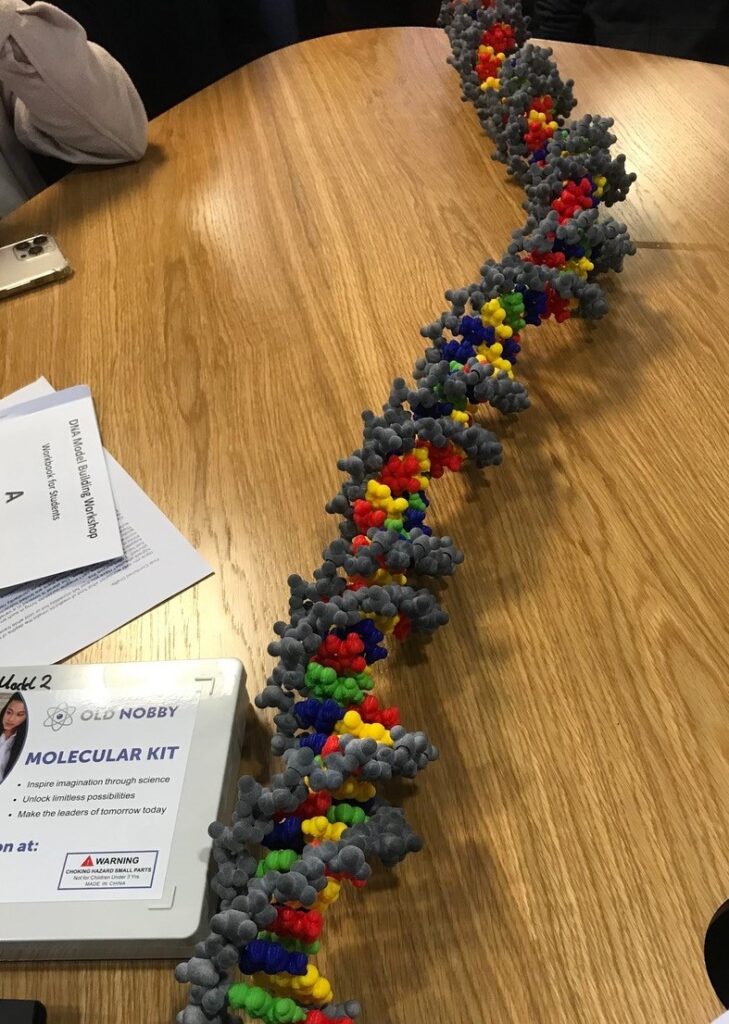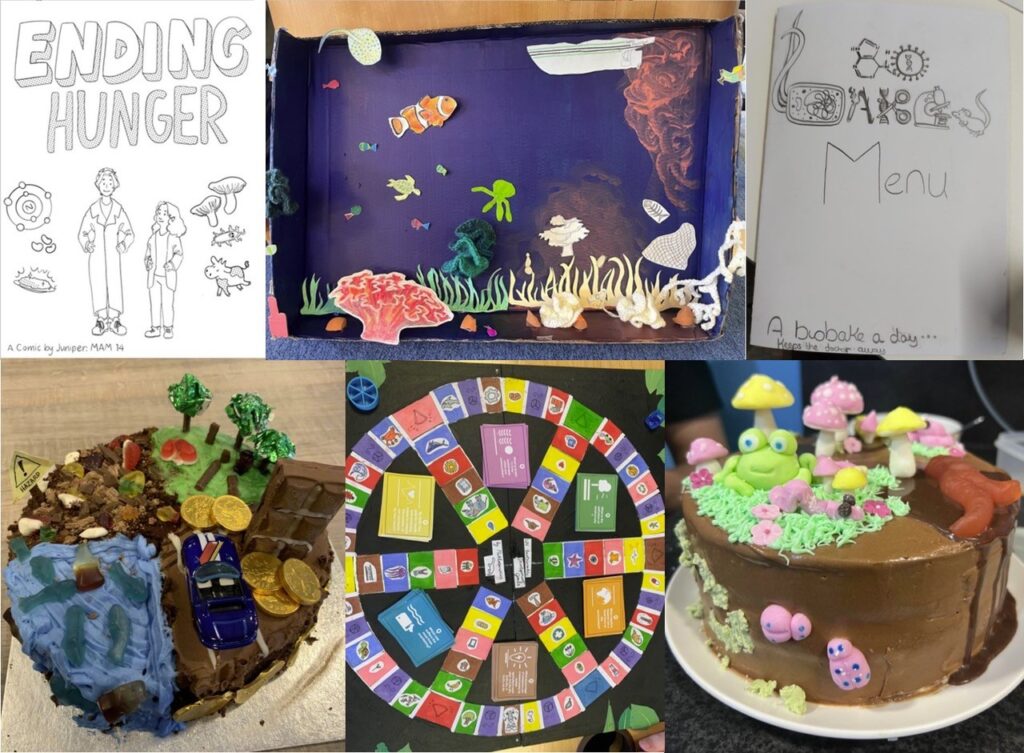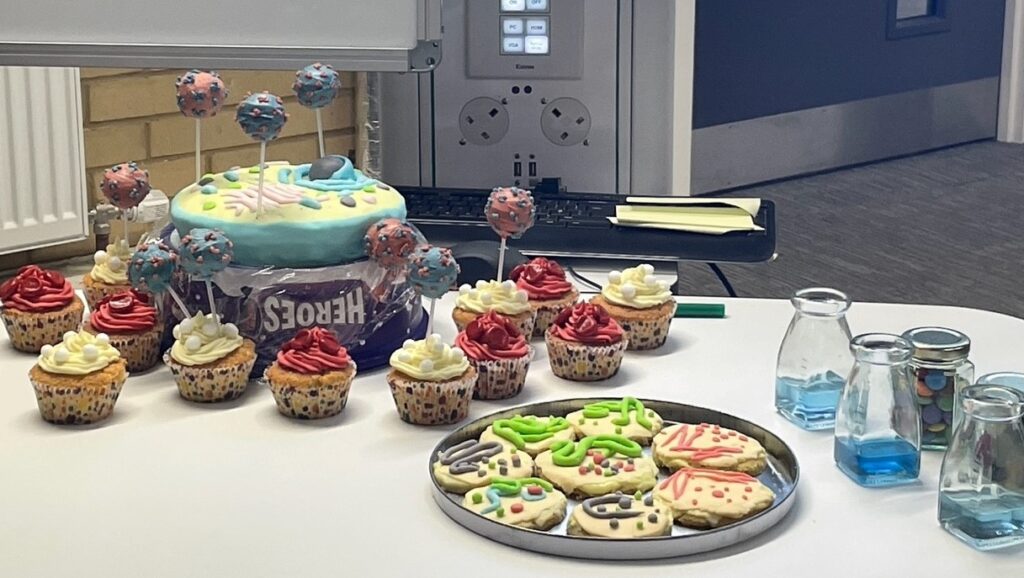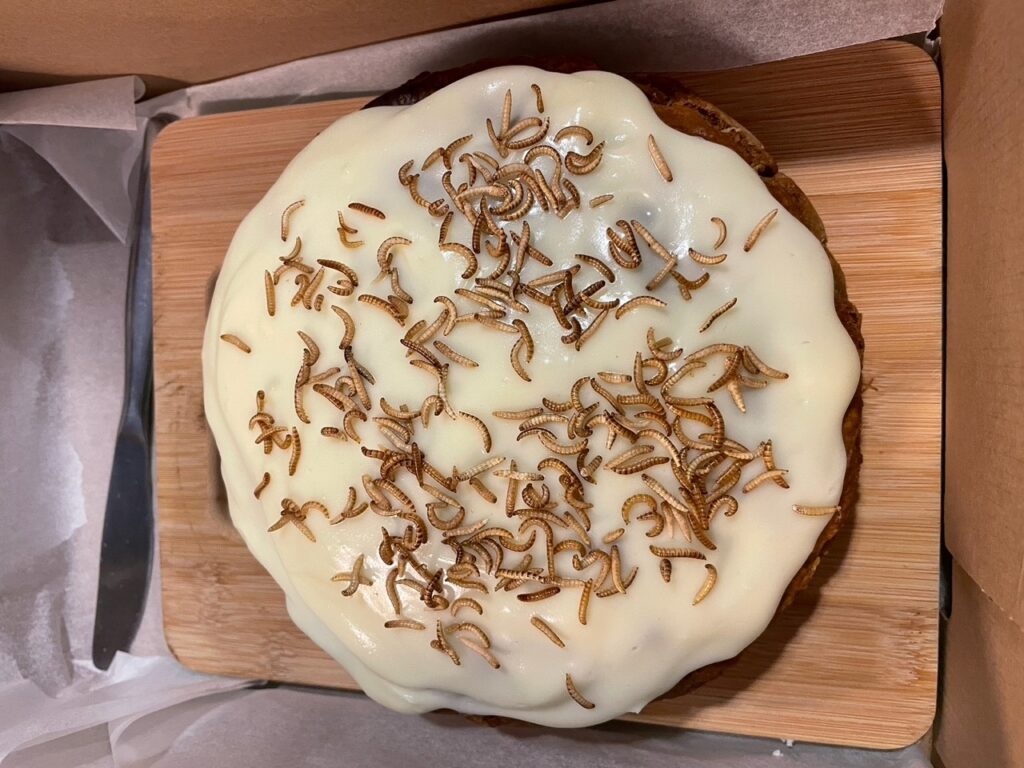In this extra post, Elise Darmon, Fizzy Abou Jawad, and Heather McQueen, from the School of Biological Sciences, showcase how to embed creativity into the curriculum.
Creativity is central to both being successful and flourishing at most workplaces. It helps us to find solutions to problems (Adams et al., 2009) while keeping us interested in the process. It is, therefore, not surprising that many universities mention creativity as a graduate attribute.
Even though some people consider themselves less or more creative than others, creativity can be learnt and developed (McWilliam & Dawson, 2008). Considering the importance of developing students’ creativity, we researched staff and student opinions about:
- The importance of creativity for university study and future employment;
- Whether students realised that creativity needed to be encouraged and could be developed;
- Methods to develop creativity while keeping relevant to our subject: biology.
As part of an undergraduate fourth year assessed project, a survey of 212 biology students from The University of Edinburgh showed a large deficit between students’ learning expectations and actual experiences of learning creativity. The average rating for the perceived importance of having creativity as part of their biological sciences degree was 7.2 out of 10, while students gave an average score of only 4.8 out of 10 for perceived opportunities to be creative in their degree (Abou Jawad, 2020). Staff surveyed (41) also agreed that it was important to include creativity within the curriculum.
These results highlight the students’ wishes for more creativity during their study and for clearer indications of when their creativity is used and developed in the curriculum. A workshop to develop creativity was then researched, developed and trialed with 31 students. After this workshop, 74% of these students thought this sort of activity within the curriculum would improve their learning experience.
Taking these results into account, we aimed to embed creativity in our new first-semester first-year biology course. This is in line with our ethos that skills and attributes are as important to learn and develop as the core knowledge of the subject. We drip-fed examples of creativity in science communication within weekly emails. We also linked creativity to scientific progress, and promoted student opportunities to evaluate creative outputs and to practice their own creativity in workshops and assessments.

Public engagement staff were partners throughout the development and delivery of this aspect of our curriculum. The same groups of 4-6 students worked together each week within weekly workshops, with the class being divided into three separate workshop sets. Because most of the students’ creative work was carried out in groups, students could complement and stimulate each other’s creativity. Examples of the creative activities the students carried out would be:
- Writing scikus (science-based haikus) (Homes, 2017)
- Writing for the public
- Creative solution ideation
- Asking pertinent questions about the course material
- Creating their own figure to enrich academic writing
- Around the mid-point of the course, creating our exciting creative events.

Creative events
As well as the presentations being assessed, the creative events were also enjoyable social events. Each student group needed to present a creative piece of work on any chosen aspect of biology that addressed one or more of the Sustainable Development Goals (SDGs). Students had free choice in the media or mode of communication of their subject as long as it took no more than five minutes to read/view/perform and was no larger than 2m3. These creations were then shared with staff, special guests, and the rest of the students (all of whom were markers) within each workshop set during a social event (which included cakes).

Students were extremely creative for this occasion, and came up with very different ideas and designs: baking, comic strips, videos, posters, models, board games, Minecraft animation, sculpture, song, artwork, tattoos, and even a fashion show.

The students’ performances were outstanding, and they enjoyed working on and performing at the event (one quote from a student in the survey stating, “creativity project was fun”).

By weaving creativity throughout the workshops and group assessments of our new first-semester first-year biology course, we aimed to make sure that students recognised the importance of developing their creativity as well as giving them the tools and opportunities to do so. All this was carried out in a safe and friendly environment, as one of the students stated in the end of course survey,
The inclusion of creative tasks within the workshops made them extremely enjoyable.
Another student commented,
I really love the creative task, this course allows us to keep an interest, enthusiasm and creative mindset when studying.
The link between biology and creativity was also highlighted by another student in the survey,
Creative sessions with building DNA and proteins were great to help visualise what we were learning.
Perhaps our favourite feedback comment, however, was in response to the question, “What was most valuable about the course, and why?” whereby one student simply responded: “creative [sic], it’s important”.
References
Abou Jawad, F-M. (2020). Is it important to offer students the opportunity to practice their creativity in bioscience degrees and what impact does this have on student learning experience? B.Sc. thesis. University of Edinburgh.
Adams, D.J., Beniston, L. & Childs, P. (2009) Promoting creativity and innovation in biotechnology. Trends in biotechnology, 27(8), pp. 445-447.
Homes, A. (2017). The Sciku project. [Online]. Available at: https://thescikuproject.com (Accessed: February, 2020).
McWilliam, E. & Dawson, S. (2008) Teaching for creativity: towards sustainable and replicable pedagogical practice. Higher Education, 56(6), pp.633–643.
 Fizzy Abou Jawad
Fizzy Abou Jawad
Fizzy Abou Jawad is a Biological Sciences (Immunology) graduate and now works as a Student Adviser, supporting students during their university journeys. Fizzy was also a EUSA sabbatical officer in 2020/21 where she was involved in early stages of the curriculum transformation project. Fizzy is keen to support students throughout their university experience and to help ensure they leave as confident, well-rounded graduates.
 Elise Darmon
Elise Darmon
Elise Darmon is a Lecturer in Molecular Bioscience Education and a FHEA. She has enjoyed supervising Fizzy’s project and helping in the design of the new Life 1 course (first-year Biological Sciences) with Heather. Elise’s interest is in developing students’ active participation and communication, as well as their confidence and their awareness of the Sustainable Development Goals.
 Heather McQueen
Heather McQueen
Heather McQueen is Professor of Biology Education within the School of Biological Sciences. Her current academic interests lie in active learning techniques, student engagement in large classes and inclusive education, but she is also passionate about canine learning. She is the course organiser and lead developer of the new first year biology course Life 1, and is SFHEA and a National Teaching Fellow.


